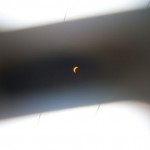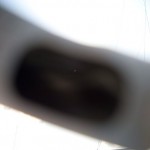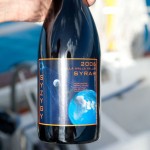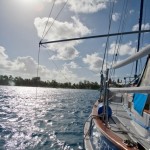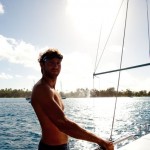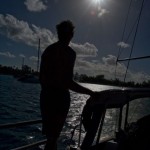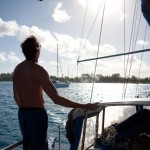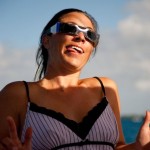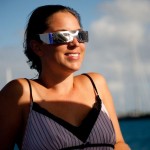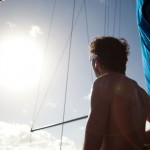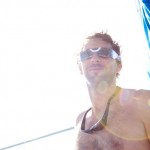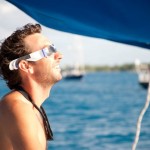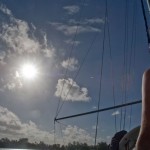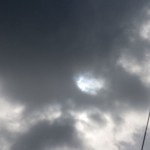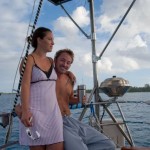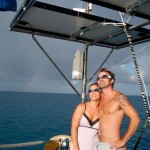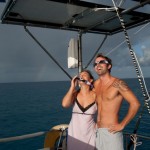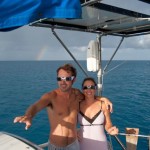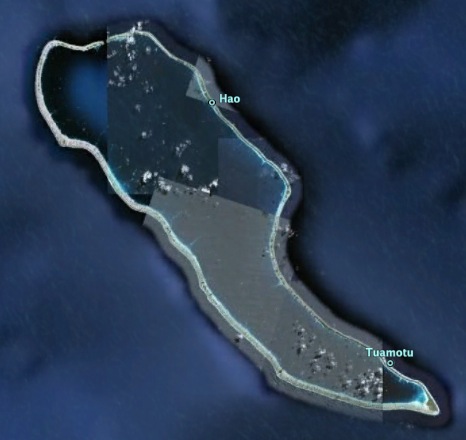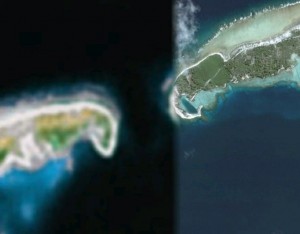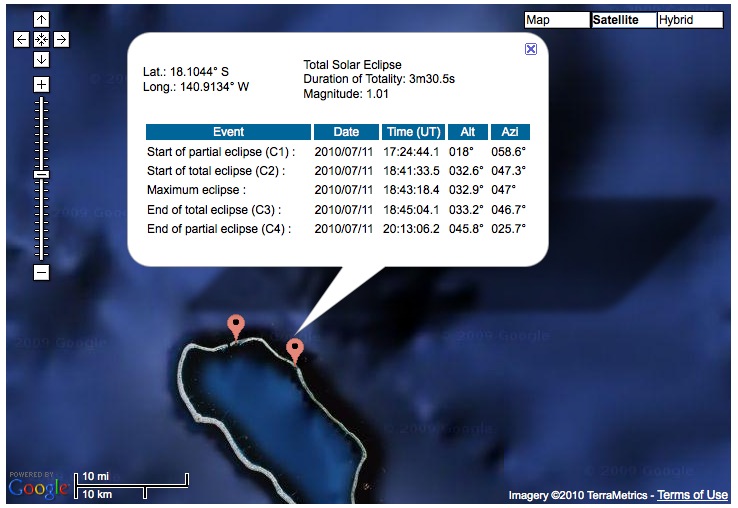Aug 05 2010
Solar Eclipse on Rangiroa (syzygy on Syzygy)
post-dated: this refers to events on July 11
(for background, see this previous post)
We observed the solar eclipse from the atoll Rangiroa in the Tuamotus. It occurred around 10 in the morning, which is why in the pictures below Karen and I both look like we just got out of bed (jon was up at dawn). Jon found these cheap dark glasses for safely looking at the sun, which is why we all look like we’re watching a cheesy 3D movie.
It was great to observe a solar eclipse, though it was admittedly less dramatic than I had hoped for. The viewing party lasted about 30 minutes, so it wasn’t as rapid as I had expected, either, which gave me some time to drink my coffee, wake up a bit more, and appreciate it. We were just outside the area of the total solar eclipse; on Rangiroa we had something like a 93% totality, and it turns out that 7% of the sun is a hell of a lot brighter than you would expect. At its darkest, it had a magnitude of illumination equivalent to the sunset.
Originally we had planned on being farther south, in the path of the total eclipse, but it turned out to be incompatible with all our other route-planning considerations. I do not regret our choice.
As a photographer, I was most fascinated by the color temperature of the light. At sunrise and sunset we describe the light as very “warm”: when the sun is very low in the sky, its light passes through much more of the atmosphere before it illuminates our surroundings; as a result more of the blue wavelengths are filtered out, leaving a more orange, or “warm”, illumination.
–ignorable aside:
The expression “color temperature” comes directly from physics: as an object is heated, it gives off radiation (this is called “blackbody radiation” fyi). The temperature of the object determines the wavelength of radiation. At room temperature, objects give off long wavelength radiation, in the infrared spectrum (which we cannot see, except with the help of special goggles anyway). When the object gets hotter, say a couple thousand degrees, the wavelength of radiation becomes shorter, and it gives of visible light that we can see (think of a piece of metal glowing orange in a forge). The hotter it gets, the shorter the wavelength. Orange light is longer wavelength, bluer light is shorter wavelength. As a piece of metal heats up in the forge, it goes from orange towards blue in color. So, strictly speaking, blue is hotter, orange is cooler. However, photographers got it backwards and refer to orange light as warmer and bluer light as cooler; admittedly this seems more intuitive. Since it is rare to find a photographer who pays any attention to physics, we’ll have to forgive them the mistake.
–end of ignorable aside.
During the eclipse the sun was high in the sky, and so even though the amount of light felt like a sunset, the illumination it provided had the color temperature of the mid-day sun–far “bluer” than we observe at sunset. In fact, it felt exactly like moonlight–this makes sense because moonlight itself is only reflected sunlight.
So if you want to understand what it was like, imagine a sunset with moonlight.
